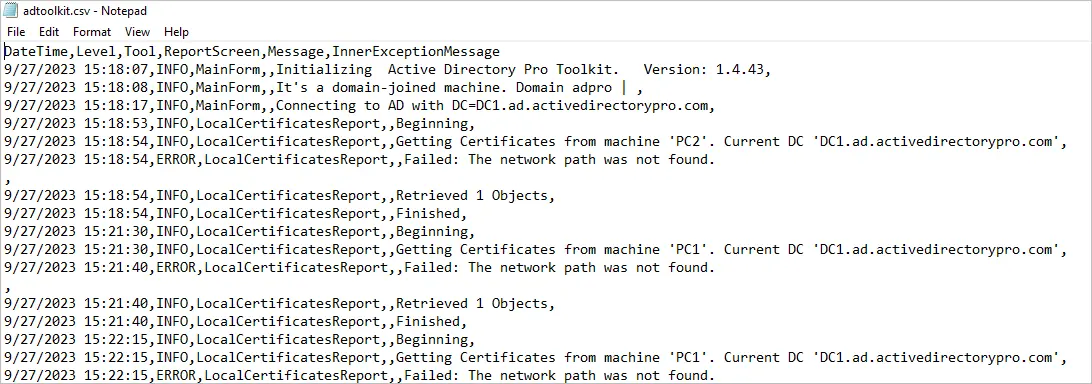AD Pro Toolkit User Guide
- Getting Started
- User Management
- Group Management
- Security Tools
- AD Reports
- Other Tools
- Troubleshooting
- Firewall Settings
- Audit Log Settings
Getting Started | AD Pro Toolkit
Requirements
- .NET 4.7.2 Runtime or higher
- Firewall – Some tools use WMI to query info from the computer. WMI needs to be allowed inbound on the target systems. Refer to the firewall document for more details.
- Group policy management console – The group policy reports require the group policy management console to be installed. This is included with the Microsoft RSAT tools.
- Permissions – To create and update objects in AD you will need permissions in Active Directory.
Supported Platforms
The AD Pro Toolkit can be installed on the following operating systems.
- Windows 10/11
- Windows Server 2008 or Later
Install Steps
1. Right-click the ADProToolkit.zip file and select “Extract All”.
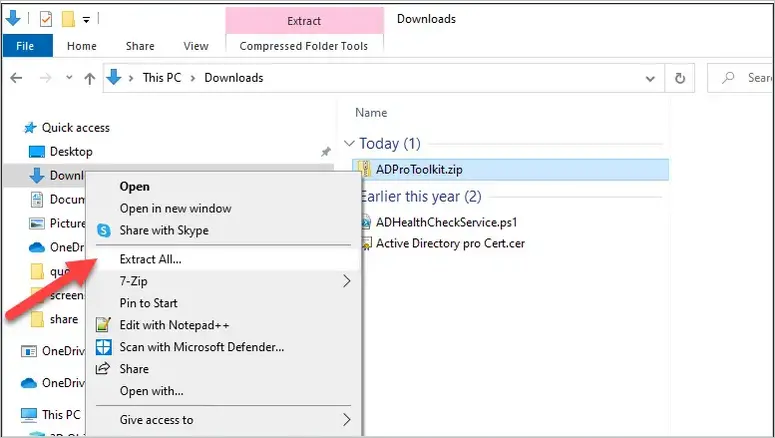
2. Select a destination to extract the files. You can keep the default or change it to another folder.

3. From the extracted folder double click the ADProToolkit.msi to start the installation.
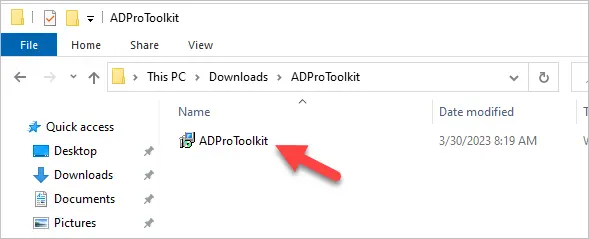
4. Click “Next” on the welcome screen.
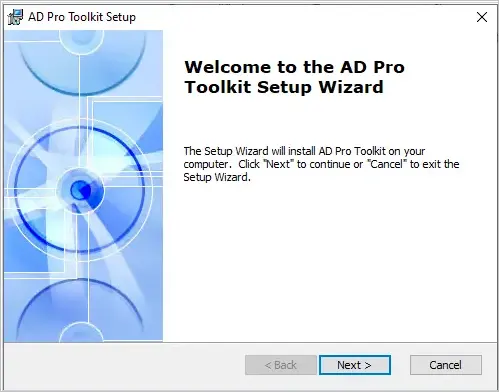
5. Accept the end user license agreement and click “Next”.
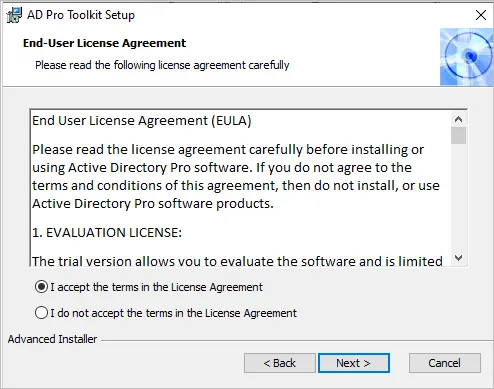
6. Select the Installation folder and click “Next”
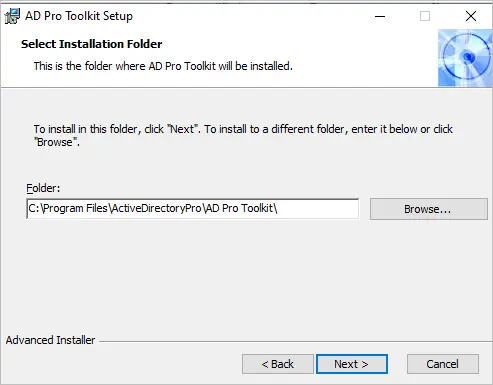
7. Click “Install” on the ready to install page.
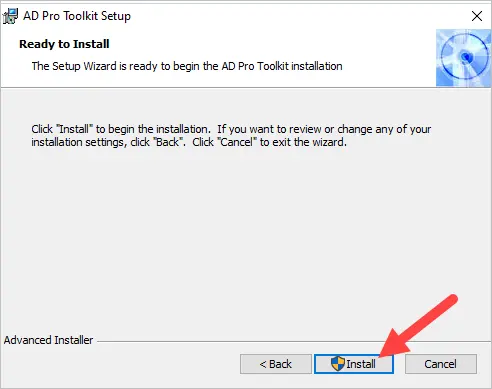
You might get prompted by Windows User Account Control. Click Yes on this popup.

When the installation is completed click finish.
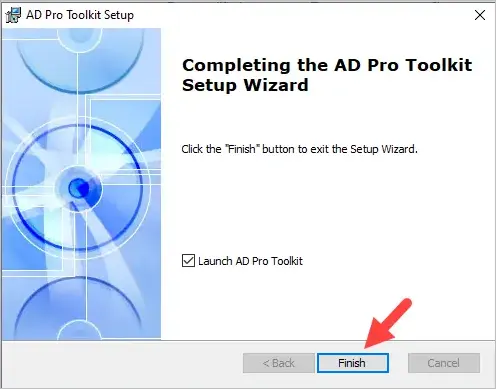
That completes the installation process.
An icon will be added to the desktop for quick access.
License and Activation
Below are the steps to apply the license file and activate the AD Pro Toolkit.
- The toolkit requires a license to activate and fully unlock the software.
- If you do not have a license file you can purchase one from our pricing page.
- If no license is installed or the license has expired the toolkit will run in trial mode.
- The license key must be installed manually. It cannot be pushed out with software deployment software.
1. After the purchase is completed you will receive an email with a license.zip attachment file.
2. Download the license.zip file.
3. Extract the zip file.
4. Open the toolkit and click on the License

5. Click on the Browse button and select the license.lic file.
6. Next, click the Activate button.
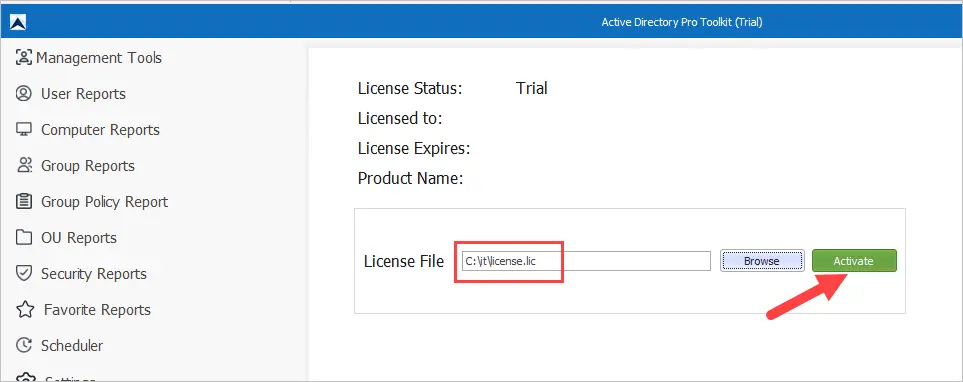
The software will now be activated and the license details will be updated.
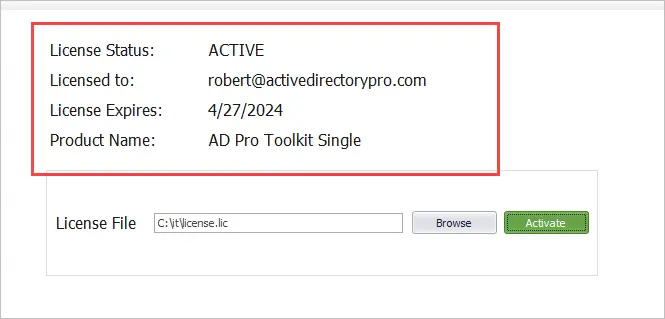
That completes the steps to activate the software.
You will receive an email 30 days before the license expires.
Authentication
The AD Pro Toolkit works on domain-joined and non-domain joined computers.
Note: You only need to authenticate to one domain controller in your domain.
By default, the AD Pro Toolkit will use pass-through authentication. If your computer is domain joined and you log in with a domain account the toolkit will use those credentials to automatically connect to your domain.
You can check the connection status by clicking on Settings.
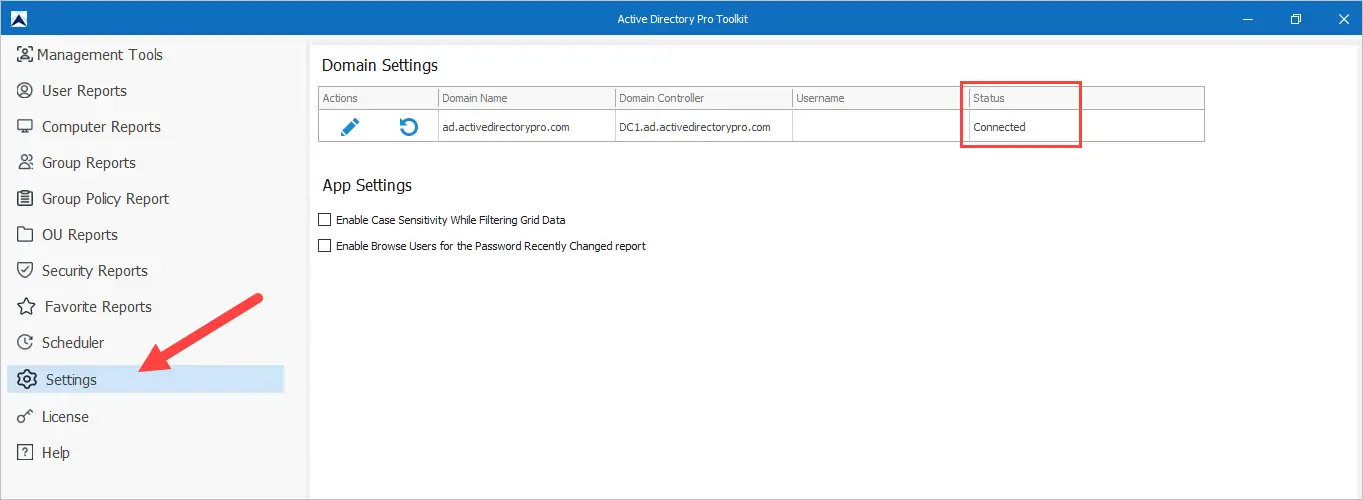
If you want the toolkit to connect with a different account then click the pencil icon.
In this example, I’m logged into the computer as a regular user “robert.allen”. I want to change the toolkit to use by admin account “robert.allen.da”.
Check the box Specify username then enter your username and password. If it is a domain-joined computer it should auto-detect your domain and domain controller.

If the domain and domain controller and not detected you will need to provide those details. The domain controller needs to be the FQDN.
Click OK to connect with the provided credentials.
The domain settings screen should update with the username and display connected.

Software Updates
Follow the steps below to upgrade the AD Pro Toolkit.
Automatic Updates
Note: Starting with version 1.4.22 the software will auto-check for updates on startup. You can choose to upgrade from within the software or skip the update.
Manual Updates
1. Download the latest version from the download page. You do not need to login to download the latest version.
2. Extract the zip file and launch the installer.
3. Follow the prompts to complete the installation.
When the upgrade is complete click the help menu and verify the version number.
Log Files
The AD Pro Toolkit will save error and debug events to a log file.
To view the log files click on help and then click Open toolkit logs.

